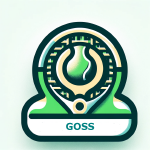Yoga for Tennis Eyes
Enhancing Visual Performance on the Court
Incorporating eye yoga into your tennis training can significantly enhance your visual performance, helping you react quicker and more accurately to the fast-paced game. Here’s how you can integrate yoga specifically for your eyes into your tennis routine.
The Benefits of Eye Yoga for Tennis Players
1. Improved Focus and Concentration: Eye yoga exercises can help you maintain better focus on the ball, improving your reaction times and shot accuracy.
2. Enhanced Peripheral Vision: Regular practice can expand your peripheral vision, allowing you to better anticipate your opponent’s moves.
3. Reduced Eye Strain: These exercises can reduce eye strain and fatigue, especially useful during long matches or training sessions.
Key Eye Yoga Exercises for Tennis Players
1. Palming
– How to Do It: Rub your palms together to generate heat and place them gently over your closed eyes without applying pressure. Hold for 30 seconds to a minute.
– Benefits: Relaxes the eye muscles and relieves strain.
2. Eye Rolling
– How to Do It: Sit comfortably and roll your eyes in a circular motion. First clockwise, then counterclockwise, for about 30 seconds each.
– Benefits: Enhances the flexibility of eye muscles and improves blood circulation.
3. Focus Shifting
– How to Do It: Hold your thumb about 10 inches from your face. Focus on your thumb, then shift your focus to an object about 10-20 feet away. Repeat this for a minute.
– Benefits: Improves focus and concentration.
4. Near and Far Focusing
– How to Do It: Focus on your thumb held at arm’s length, then shift your focus to a distant object. Repeat for 2-3 minutes.
– Benefits: Enhances the ability to quickly switch focus between near and far objects, crucial for tracking the ball.
5. Diagonal Viewing
– How to Do It: Look up and to the right, then down and to the left. Repeat in the opposite direction. Perform for 1-2 minutes.
– Benefits: Strengthens the eye muscles used for diagonal movements, aiding in following the ball’s trajectory.
Incorporating Eye Yoga into Your Tennis Routine
1. Warm-Up Routine: Integrate these exercises into your pre-match or training warm-up to prepare your eyes for the game.
2. Cool-Down Routine: Perform these exercises post-match to relax and rejuvenate your eyes, helping in faster recovery.
3. Consistency: Practice these exercises regularly, not just on match days, to build and maintain strong visual skills.
PLEASE NOTE while eye exercises can enhance the sensorimotor vision process, they are not a substitute for medical treatments for more severe eye conditions.
Incorporating eye yoga into your tennis training regimen can significantly enhance your visual and mental acuity on the court. Regular practice can lead to improved focus, reduced eye strain, and better overall performance, making it an essential addition to any competitive player’s toolkit.





